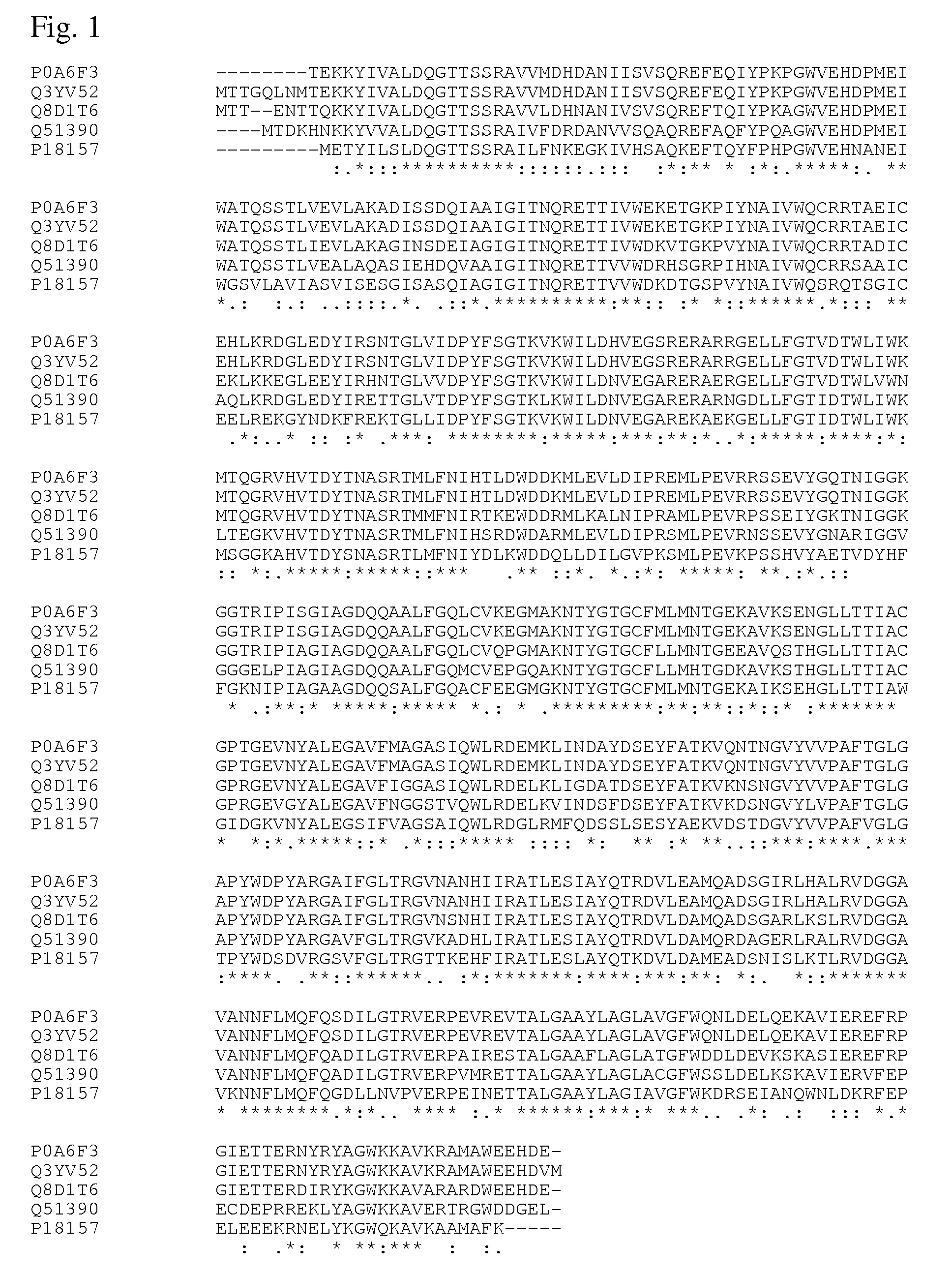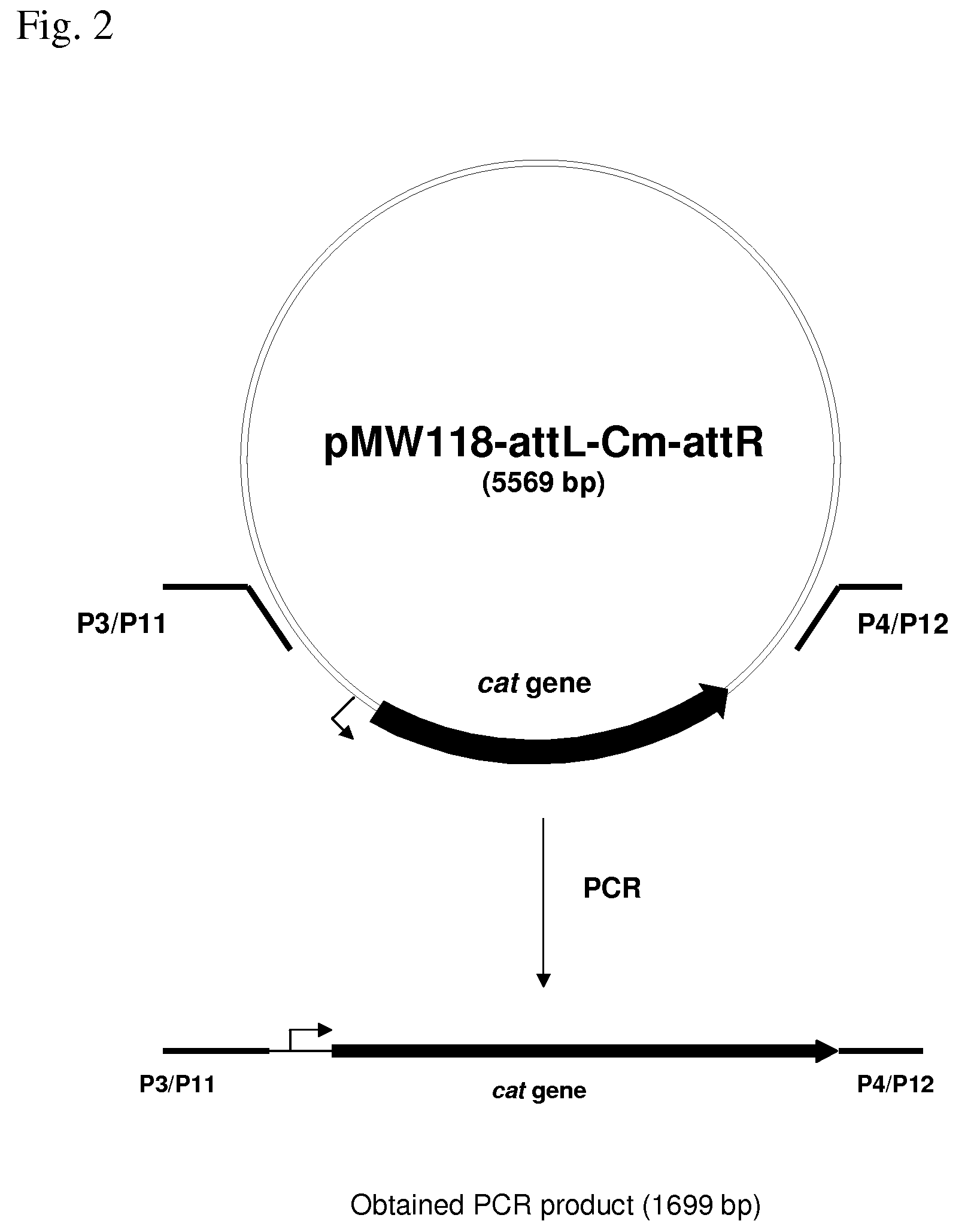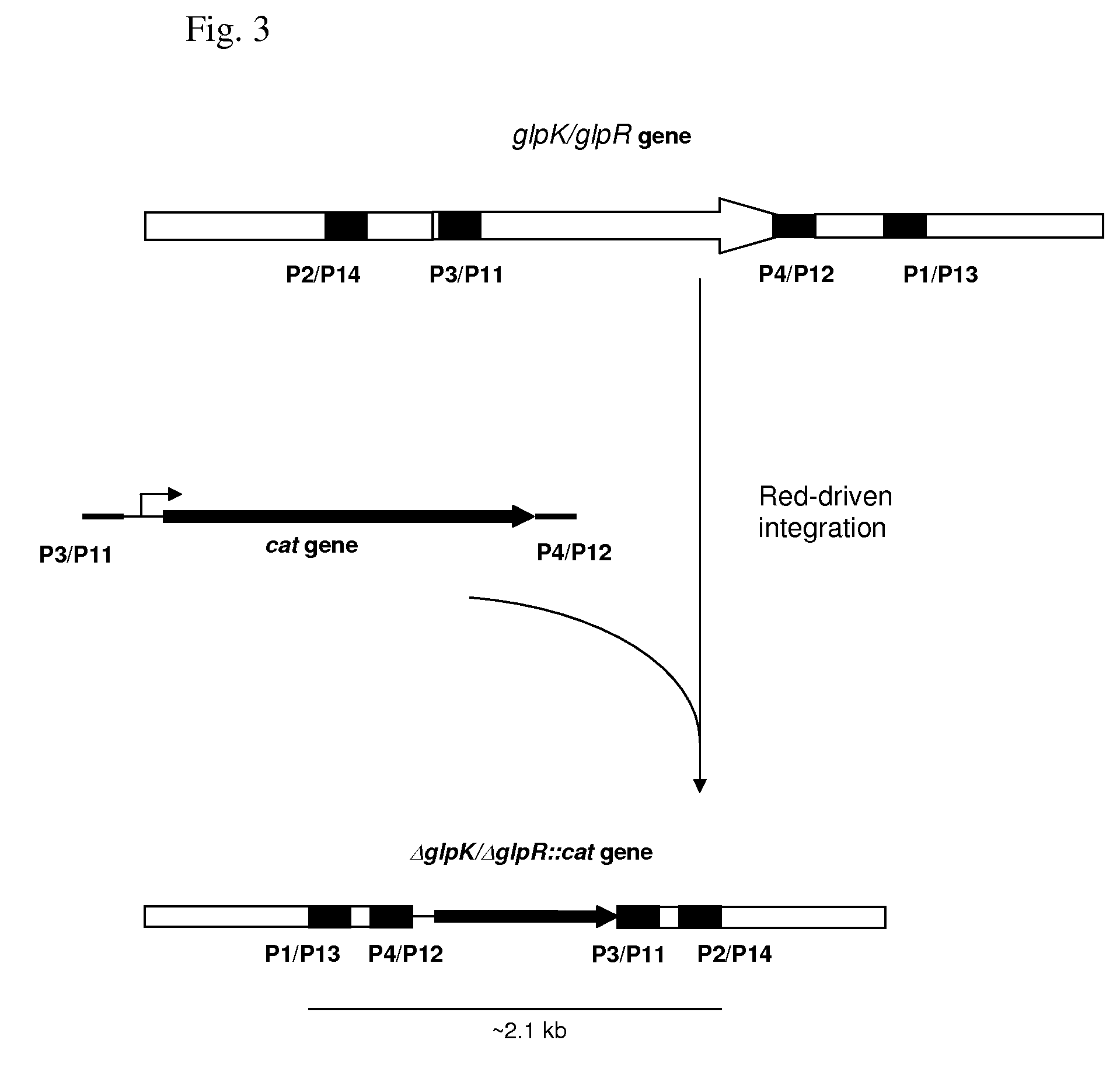Method for producing an L-amino acid by fermentation using a bacterium having an enhanced ability to utilize glycerol
a technology of glycerol and l-amino acids, which is applied in the field of biotechnology, can solve the problems of limiting the activity of glycerol kinase, the price of l-amino acids produced is still high, and the above-mentioned carbohydrates and other traditional carbon sources, such as molasses, corn, sugarcane, etc., to achieve the effect of enhancing the ability to utilize glycerol
- Summary
- Abstract
- Description
- Claims
- Application Information
AI Technical Summary
Benefits of technology
Problems solved by technology
Method used
Image
Examples
reference example 1
Construction of a Strain Containing Mutant glpK Gene Coding for Glycerol Kinase with the Known Mutation
[0186]1. Deletion of the glpK Gene
[0187]According to the approach described by Yu D. et al., a small deletion (34 bp) in the gene glpK around the site of interest was introduced by the Red-dependent recombination procedure. A strain having a deletion of the glpK gene was constructed by the Red-driven integration. The DNA fragment containing the CmR marker encoded by the cat gene was obtained by PCR, using primers P3 (SEQ ID NO: 15) and P4 (SEQ ID NO: 16) and plasmid pMW118-attL-Cm-attR as a template. Primer P3 contains both a region complementary to the 36-nt region of the glpK gene upstream the region of deletion and a region complementary to the attL region. Primer P4 contains both a region complementary to the 35-nt region of the glpK downstream of the region of deletion gene, and a region complementary to the attR region. Conditions for PCR were as follows: denaturation step fo...
example 1
Construction of Strains Containing the Mutant glpK Gene Coding for Glycerol Kinase with the Gly234Asp Substitution
[0197]1. Introduction of the glpK gene coding for glycerol kinase with Gly234Asp substitution into the glpK gene-deleted strain
[0198]A strain containing the glpK gene coding for glycerol kinase with Gly234Asp substitution was constructed by using the Red-driven integration. To introduce the G234D substitution of the special oligonucleotides with overlapping termini, primers P7 (SEQ ID NO: 19) and P8 (SEQ ID NO: 20) were synthesized. Primers P7 and P8 were used for electroporation of the E. coli strain MG1655ΔglpK::cat-2, which contains the plasmid pKD46. Electrocompetent cells were prepared as described in Example 1. Electroporation was performed using 70 μl of cells and ≈100 ng of P7 and P8 oligonucleotides. Cells after electroporation were incubated with 1 ml of SOC medium at 37° C. for 2.5 hours and then were plated onto minimal medium Adams with agar containing glyce...
example 2
Construction of Strains Containing Mutant glpK Gene Coding for Glycerol Kinase with Random Substitutions in Positions 231-235
[0201]1. Introduction of the glpK gene encoding glycerol kinase having random substitutions into the glpK gene-deleted strain
[0202]Strains containing the glpK gene coding for glycerol kinase with random substitutions in positions 231-235 were constructed by using the Red-driven integration. To introduce random substitutions in positions 231-234 the special oligonucleotides with overlapping termini, primers P9 (SEQ ID NO: 21) and P10 (SEQ ID NO: 22) were synthesized. Primer P9 has 70 nucleotides and has a region with 7 random nucleotides, depicted in SEQ ID NO: 21 by the letters “h” (for A or C or T), “d” (for A or G or T) and “v” (for A or C or G). Primer P10 has 70 nucleotides and has a region with 7 random nucleotides, depicted in SEQ ID NO: 22 by the letters “h” (for A or C or T), “d” (for A or G or T) and “b” (for C or G or T). Primers P9 and P10 were used...
PUM
| Property | Measurement | Unit |
|---|---|---|
| temperature | aaaaa | aaaaa |
| temperature | aaaaa | aaaaa |
| temperature | aaaaa | aaaaa |
Abstract
Description
Claims
Application Information
 Login to View More
Login to View More - R&D
- Intellectual Property
- Life Sciences
- Materials
- Tech Scout
- Unparalleled Data Quality
- Higher Quality Content
- 60% Fewer Hallucinations
Browse by: Latest US Patents, China's latest patents, Technical Efficacy Thesaurus, Application Domain, Technology Topic, Popular Technical Reports.
© 2025 PatSnap. All rights reserved.Legal|Privacy policy|Modern Slavery Act Transparency Statement|Sitemap|About US| Contact US: help@patsnap.com



